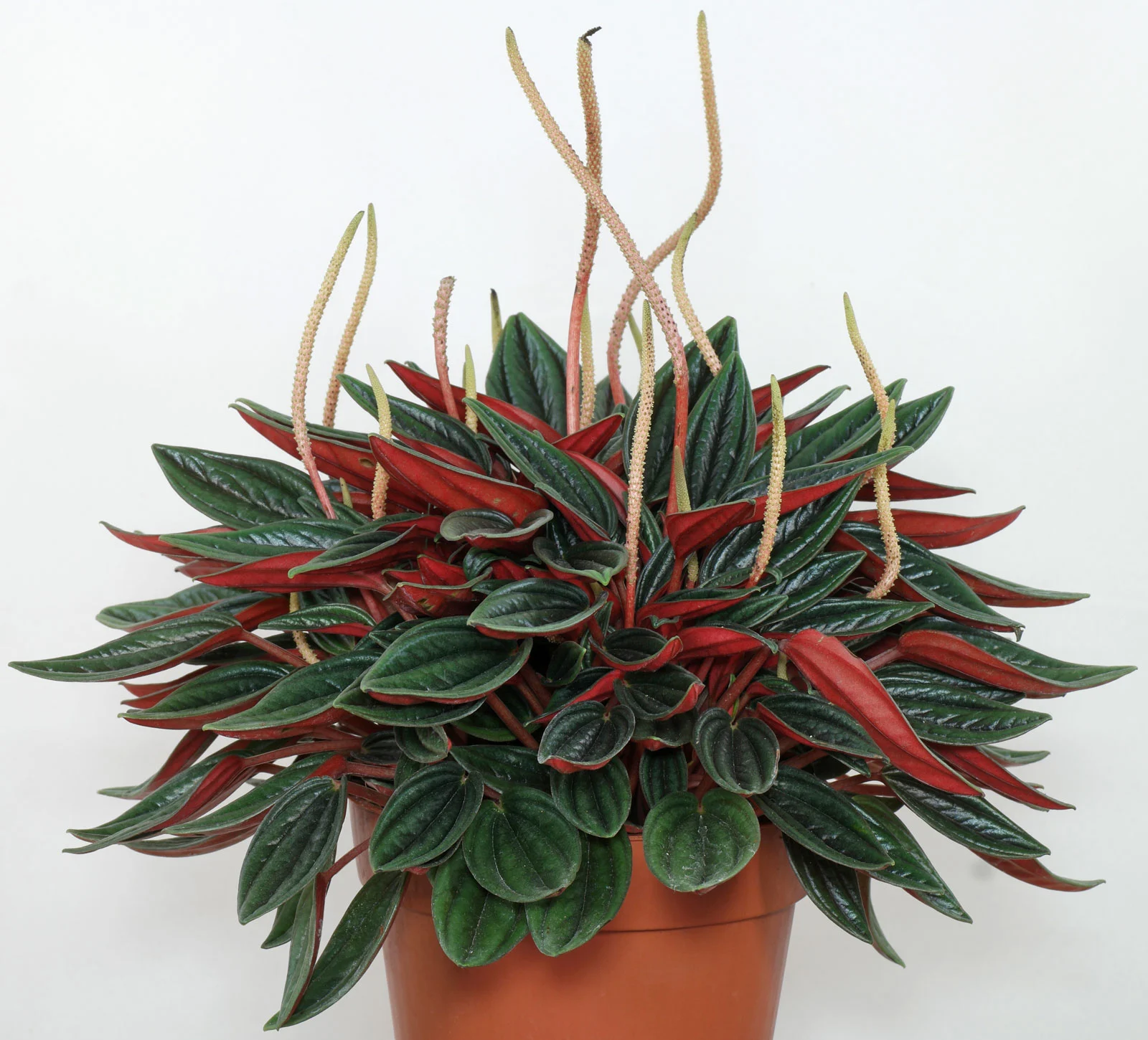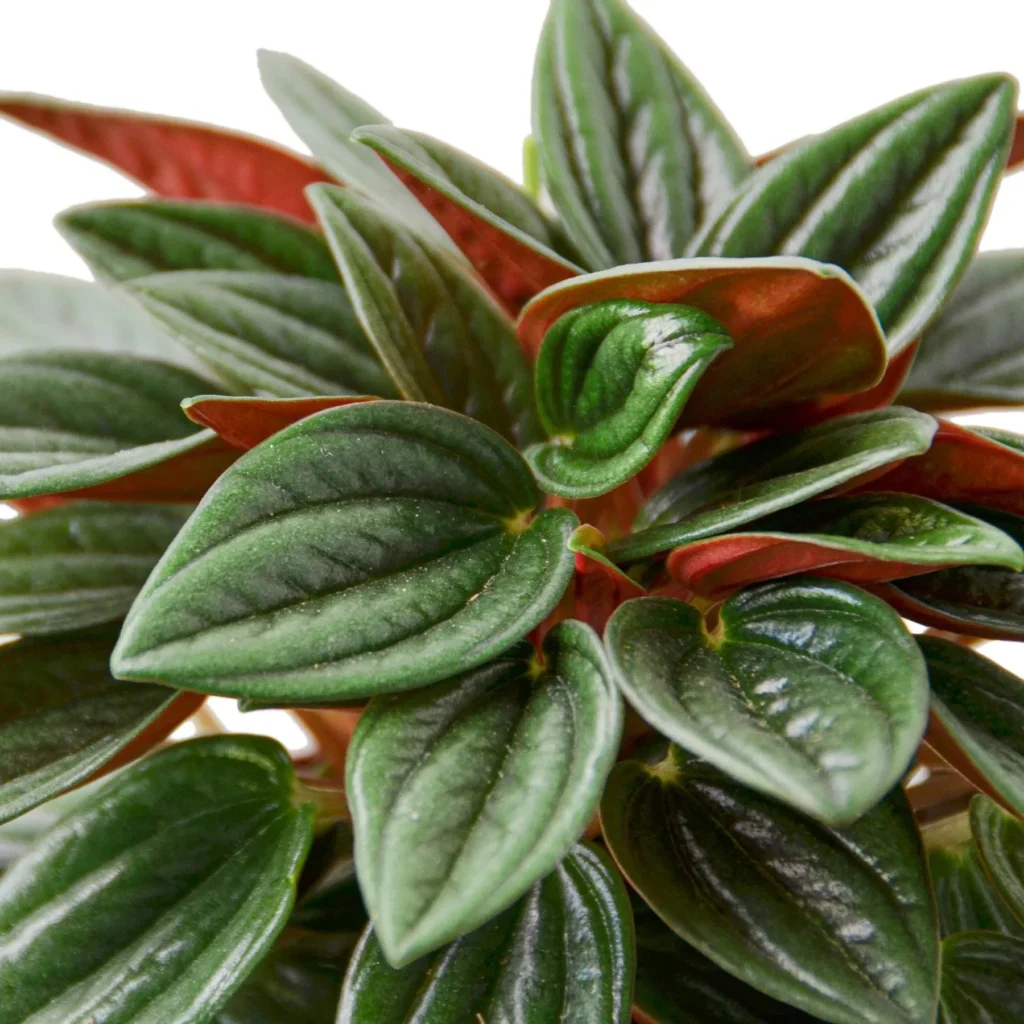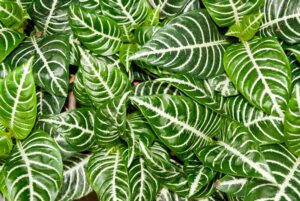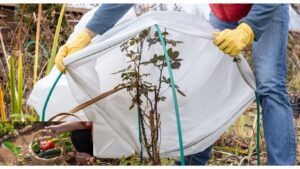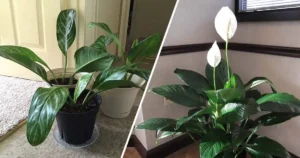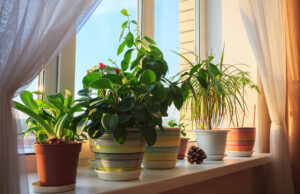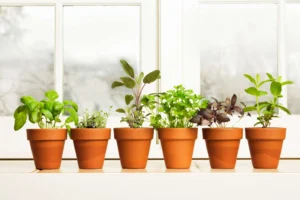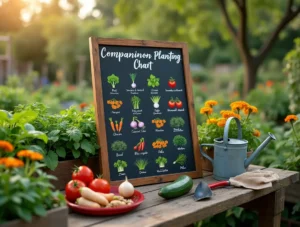Peperomia Rosso, also known as Emerald Ripple Peperomia, is a stunning houseplant that has captured the hearts of plant enthusiasts with its unique foliage and low-maintenance nature. If you’re looking to add a touch of greenery to your indoor space, Peperomia Rosso is an excellent choice. This guide will provide you with all the information you need about Peperomia Rosso care and propagation, ensuring your plant thrives and brings beauty to your home.
On This Page
What is peperomia?
Description and Characteristics
Peperomia Rosso, scientifically known as Peperomia caperata ‘Rosso’, is a member of the Piperaceae family. It features dark green, deeply ridged leaves with striking red undersides, making it a visually appealing plant. The leaves are typically heart-shaped and grow in a rosette pattern, giving the plant a compact and bushy appearance. The plant’s size makes it perfect for tabletops, shelves, or even as part of a terrarium.
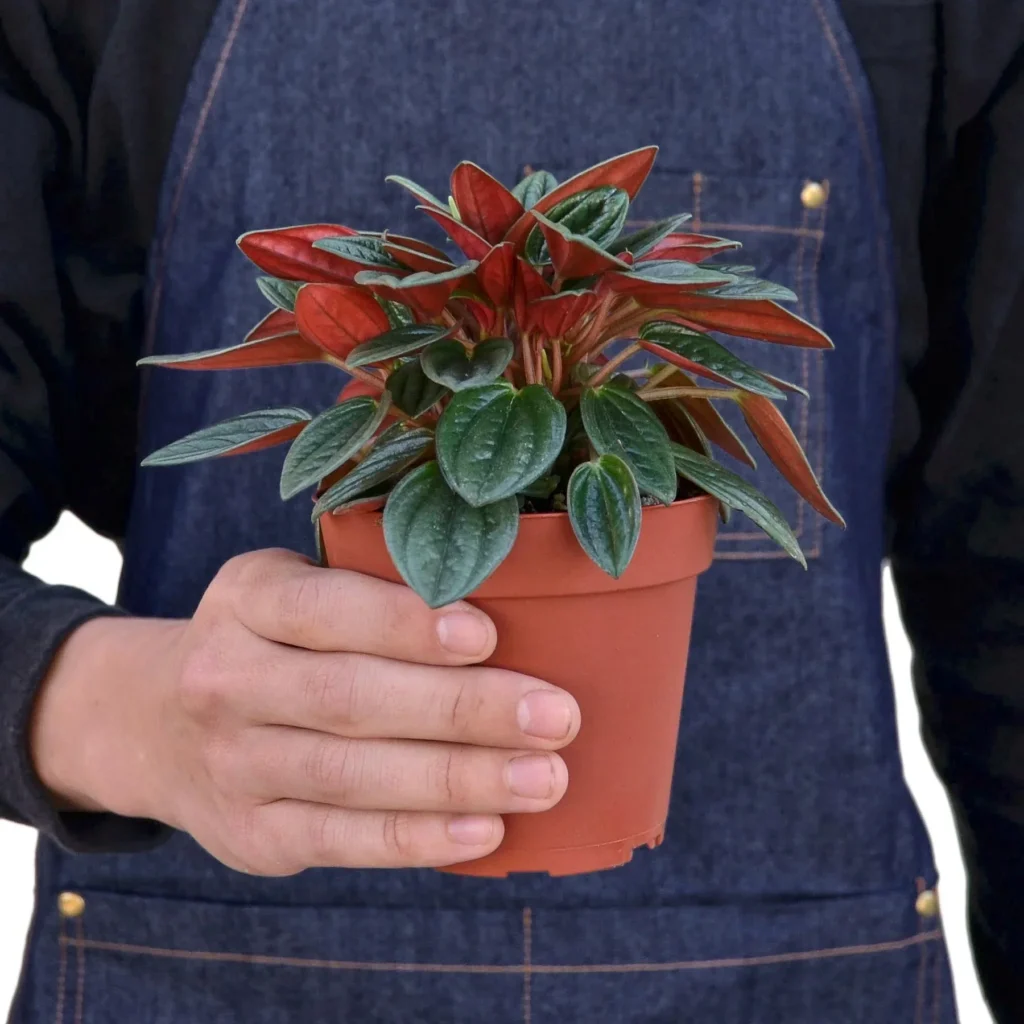
If you’re ready to add a Peperomia Rosso to your indoor plant collection, now is the perfect time to take action! This stunning plant, known for its unique foliage and easy-care nature, can be the perfect addition to your home. Purchase your Peperomia Rosso from Leaf & Clay today and enjoy the beauty and benefits of this wonderful plant. Don’t miss out on the opportunity to bring a touch of nature into your space!
Origin and Natural Habitat
Peperomia Rosso is native to the tropical regions of Central and South America. In its natural habitat, it grows as an epiphyte, meaning it often lives on trees and derives its nutrients from the air, rain, and debris accumulating around it. This epiphytic nature explains its adaptability to a variety of indoor environments.
Common Names and Varieties
While Peperomia Rosso is the most popular variety, there are several other types of Peperomia that enthusiasts might be interested in. These include Peperomia obtusifolia (Baby Rubber Plant), Peperomia argyreia (Watermelon Peperomia), and Peperomia caperata (Ripple Peperomia). Each variety has unique characteristics but shares the common trait of being relatively easy to care for.
Benefits of Growing Peperomia Rosso
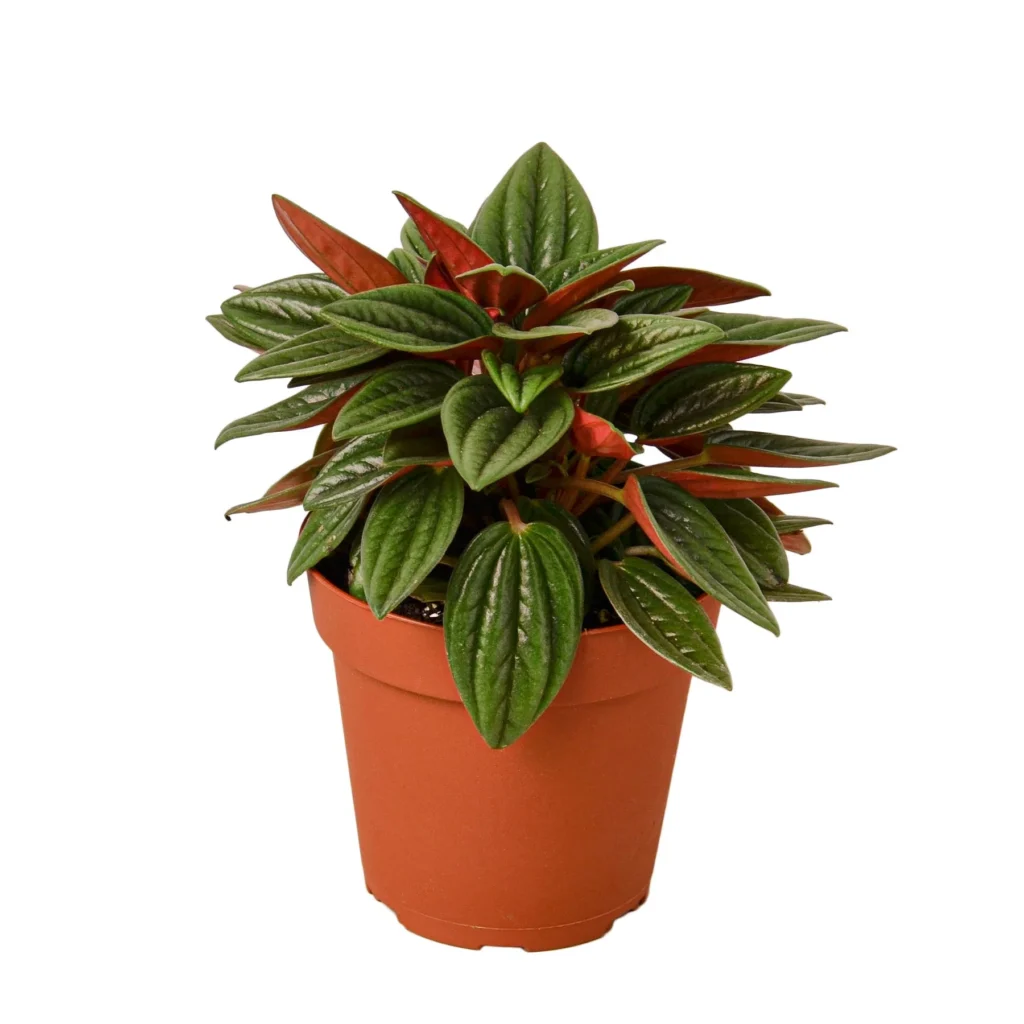
Aesthetic Appeal
One of the primary reasons people are drawn to Peperomia Rosso is its aesthetic appeal. The deep green leaves with their red undersides create a striking contrast that can enhance the visual appeal of any room. Its compact size and unique leaf texture make it a standout piece in any plant collection.
Air Purifying Properties
Peperomia Rosso is not just a pretty face; it also offers air-purifying benefits. Like many houseplants, it can help remove toxins from the air, improving indoor air quality. This makes it an excellent choice for homes and offices where air quality is a concern.
Low Maintenance Requirements
For those who might not have a green thumb, Peperomia Rosso is a perfect choice. It requires minimal care and can thrive in various indoor conditions. Its resilience makes it ideal for busy individuals or those new to plant care.
Essential Care Tips for Peperomia Rosso
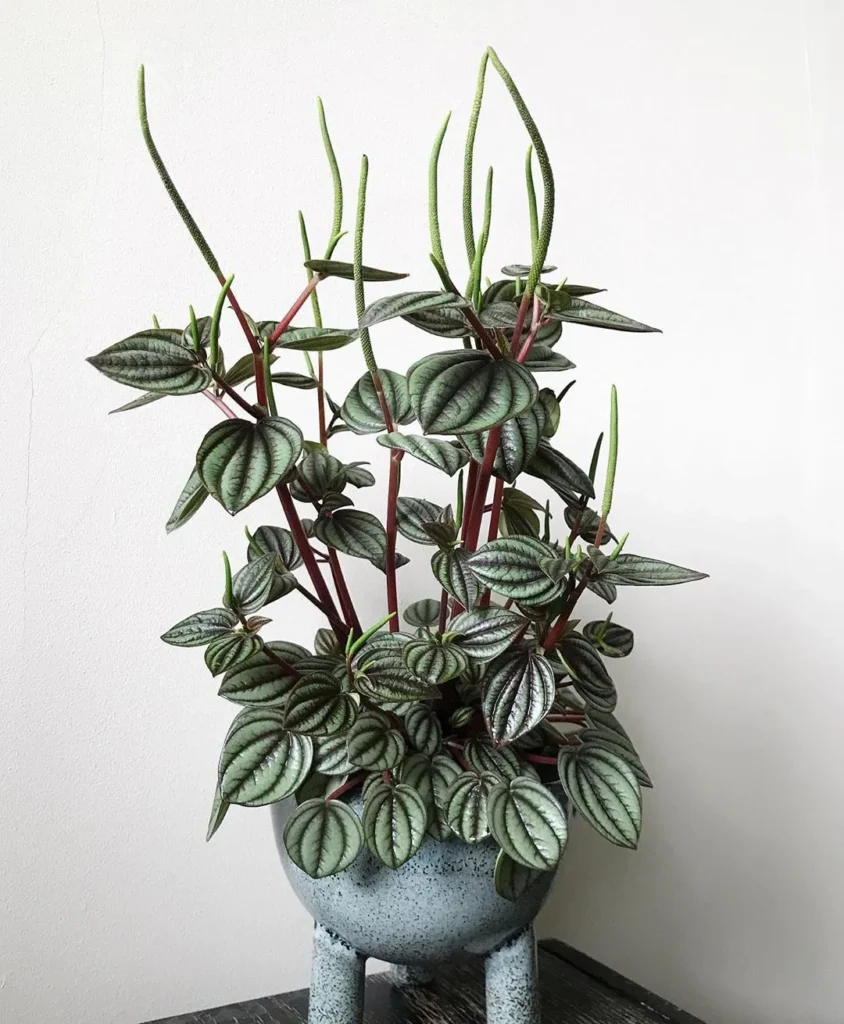
Light Requirements
Peperomia Rosso thrives in bright, indirect light. It can tolerate lower light conditions, but its growth might slow down, and the vibrant color of its leaves may fade. Avoid direct sunlight as it can scorch the leaves, leading to unsightly brown spots.
To identify if your Peperomia Rosso is receiving the right amount of light, observe its leaves. If they start to lose their vibrant color or the plant becomes leggy, it might be an indication that it’s not getting enough light. Conversely, if the leaves develop brown spots, it might be a sign of too much direct sunlight.
Watering Needs
Peperomia Rosso has relatively low watering needs. Water the plant when the top inch of the soil feels dry. Overwatering is a common mistake and can lead to root rot, a fatal condition for the plant. Ensure that the pot has good drainage to prevent water from sitting at the bottom.
Signs of overwatering include yellowing leaves, wilting despite moist soil, and a mushy stem. Underwatering signs are dry, crispy leaves, and slow growth. To maintain the right balance, use a well-draining soil mix and avoid letting the plant sit in water.
Soil and Potting
A well-draining soil mix is crucial for Peperomia Rosso. A mix of peat moss, perlite, and regular potting soil works well. This combination ensures that the soil retains some moisture but also drains well to prevent waterlogging.
When potting or repotting, choose a pot with drainage holes. Peperomia Rosso doesn’t require frequent repotting; once every 2-3 years should suffice. When repotting, handle the plant gently to avoid damaging the roots.
Temperature and Humidity
Peperomia Rosso prefers a temperature range of 65-75°F (18-24°C). It can tolerate slightly cooler temperatures but avoid exposing it to drafts or sudden temperature changes, which can stress the plant.
In terms of humidity, Peperomia Rosso thrives in moderate to high humidity levels. If your home has dry air, especially during winter, consider using a humidity tray or a room humidifier to maintain the ideal humidity levels. Misting the plant occasionally can also help, but be careful not to overdo it as excess moisture on the leaves can lead to fungal issues.
Fertilization
Feed your Peperomia Rosso with a balanced, water-soluble fertilizer diluted to half strength every month during the growing season (spring and summer). Over-fertilization can harm the plant, so less is more. In the fall and winter months, reduce feeding to once every two months as the plant’s growth slows down.
Signs of nutrient deficiency include pale leaves and stunted growth. If you notice these symptoms, check your fertilizing schedule and adjust accordingly.
Common Problems and Solutions
Pests and Diseases
Despite being a relatively resilient plant, Peperomia Rosso can fall prey to pests and diseases.
Common pests include:
- Spider mites: Tiny red or white spiders that create webbing on the leaves.
- Mealybugs: White, cotton-like insects that cluster on the undersides of leaves.
- Fungus gnats: Small, dark flies that hover around the soil surface.
Treatment methods:
- Use insecticidal soap or neem oil to treat infestations.
- Isolate the affected plant to prevent the spread of pests to other plants.
- Regularly inspect your plants to catch infestations early.
Common diseases include:
- Root rot: Caused by overwatering and poor drainage.
- Leaf spot: Brown or black spots on the leaves, often due to fungal infections.
Prevention and treatment:
- Ensure proper watering practices and good air circulation around the plant.
- Remove affected leaves and treat with a fungicide if necessary.
Growth Issues
Leggy growth: If your Peperomia Rosso starts to grow tall and spindly with fewer leaves, it may be a sign that it’s not getting enough light. Move it to a brighter location but avoid direct sunlight.
Yellowing leaves: This can be caused by overwatering, nutrient deficiency, or poor lighting. Assess your care routine and adjust as needed.
Propagation of Peperomia Rosso

Propagation Methods
Peperomia Rosso can be propagated through several methods:
- Leaf cuttings: A popular and straightforward method.
- Stem cuttings: Effective and quick.
- Division: Suitable for mature plants with multiple rosettes.
Step-by-Step Propagation Guide
Tools and Materials Needed
- Sharp, sterilized scissors or a knife
- Small pots or propagation trays
- Well-draining potting mix
- Rooting hormone (optional)
- Plastic bags or a humidity dome
Detailed Instructions
Leaf Cuttings:
- Select a healthy leaf with a small piece of stem attached.
- Cut the leaf and stem cleanly.
- Optional: Dip the cut end in rooting hormone.
- Plant the cutting in a small pot with well-draining soil.
- Cover with a plastic bag or place under a humidity dome to retain moisture.
- Place in indirect light and keep the soil moist but not soggy.
- Wait for roots to develop, which can take a few weeks.
Stem Cuttings:
- Choose a healthy stem with several leaves.
- Cut the stem just below a leaf node.
- Optional: Dip the cut end in rooting hormone.
- Plant the cutting in a pot with well-draining soil.
- Cover with a plastic bag or humidity dome.
- Place in bright, indirect light and keep the soil moist.
- Roots should develop within a few weeks.
Division:
- Remove the plant from its pot.
- Gently separate the rosettes, ensuring each section has roots.
- Plant each division in its own pot with fresh soil.
- Water lightly and place in indirect light.
Tips for Successful Propagation
- Use healthy, disease-free plants for propagation.
- Maintain high humidity levels to encourage root development.
- Be patient: Rooting can take several weeks.
FAQs about Peperomia Rosso Care and Propagation
- How often should I water my Peperomia Rosso? Water your Peperomia Rosso when the top inch of the soil feels dry. This typically means watering once a week, but it can vary based on your home’s humidity and temperature.
- What is the best soil for Peperomia Rosso? A well-draining mix of peat moss, perlite, and potting soil is ideal. This combination provides good aeration and prevents waterlogging.
- How can I increase humidity for my Peperomia Rosso? You can increase humidity by misting the plant occasionally, using a humidity tray, or placing a room humidifier nearby.
- Can Peperomia Rosso be grown outdoors? While Peperomia Rosso is primarily an indoor plant, it can be grown outdoors in shaded, warm, and humid environments. Ensure it is protected from direct sunlight and extreme weather conditions.
Additional Tips for Healthy Peperomia Rosso
- Pruning and Grooming Tips: Regularly prune dead or yellowing leaves to encourage new growth and maintain the plant’s shape. Use sharp, sterilized scissors to make clean cuts.
- Seasonal Care Adjustments: In winter, reduce watering and move the plant away from cold drafts. In summer, ensure it doesn’t dry out and increase humidity if needed.
- Signs of a Healthy Peperomia Rosso: Look for vibrant green leaves with red undersides, compact growth, and no signs of pests or diseases.
Conclusion
Caring for and propagating Peperomia Rosso can be a rewarding experience. By following the tips and guidelines outlined in this article, you can ensure your Peperomia Rosso remains healthy and vibrant. Whether you’re a seasoned plant parent or a beginner, Peperomia Rosso is a delightful addition to any indoor garden.
References and Further Reading
- ASPCA – Toxic and Non-Toxic Plants
- Gardening Know How – Peperomia Plant Care
- The Spruce – How to Grow and Care for Peperomia
Also Read : DIY Raised Garden Bed
